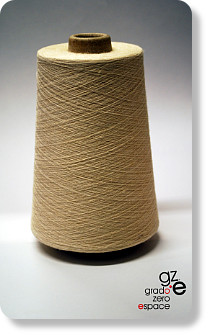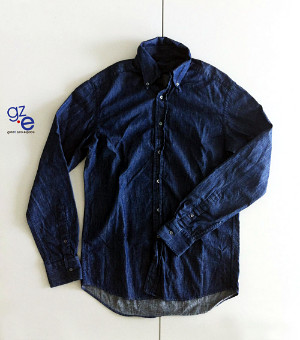An environmentally friendly alternative to contemporary textiles and dyes has been researched and produced by the Grado Zero Espace team. They have woven fabric from stinging nettle fibres. The stinging nettle fibre goes back a long way in history. The name URTICA, as it is called in Europe, derives from the Latin word 'uro' which means to burn.
During World War I and World War II nettles were used to substitute cotton yarns that were unavailable. But the most interesting fact is that thousands of uniforms from Napoleon's Armada were woven from nettles. Some of the garments woven in stinging nettle fibre have also been dyed in woad one of the oldest dyes in history. Until the Middle Ages, Europeans used woad (Isatis Tinctoria) to create a blue dye eventually replaced by indigo. The woad is a shrub that grew abundantly in parts of Europe. The colouring is in the leaves, which were dried and ground, mixed with water and made into a paste. The use of woad dates back to early times when the Romans invaded England they describe ancient Britons as fierce warriors that had their bodies painted and tattooed with intricate blue designs created from woad. In fact, the Latin meaning of 'Briton' is painted man.
Textiles made of nettle fibres are a useful alternative to other natural fibres such as hemp, linen and cotton and will play an increasingly important role in the next 5 to 7 years. The fibres of the stinging nettle have a special characteristic in the fact that they are hollow which means they can accumulate air inside thus creating a natural thermal insulation. Existing problems in the agricultural sector such as overproduction in the dairy industry, over-fertilisation of the soil, problems due to mono cultures as well as the lack of financial opportunities underline the need for alternative crops. The stinging nettle is a perennial plant which thrives on nitrogenous and over-fertilised soil, making it a very interesting alternative that would add a completely new aspect to agriculture in central Europe. Also nettles are resistant to diseases and pests so don't need dangerous pollutants and also provide undisturbed cover and can support over 40 species of insects, some of which (such as Red Admiral and Small Tortoise Shell larvae) depend on them entirely for their survival.



